From Backyards To Barn Yards, The Surprising Science Of Chickens
17:22 minutes
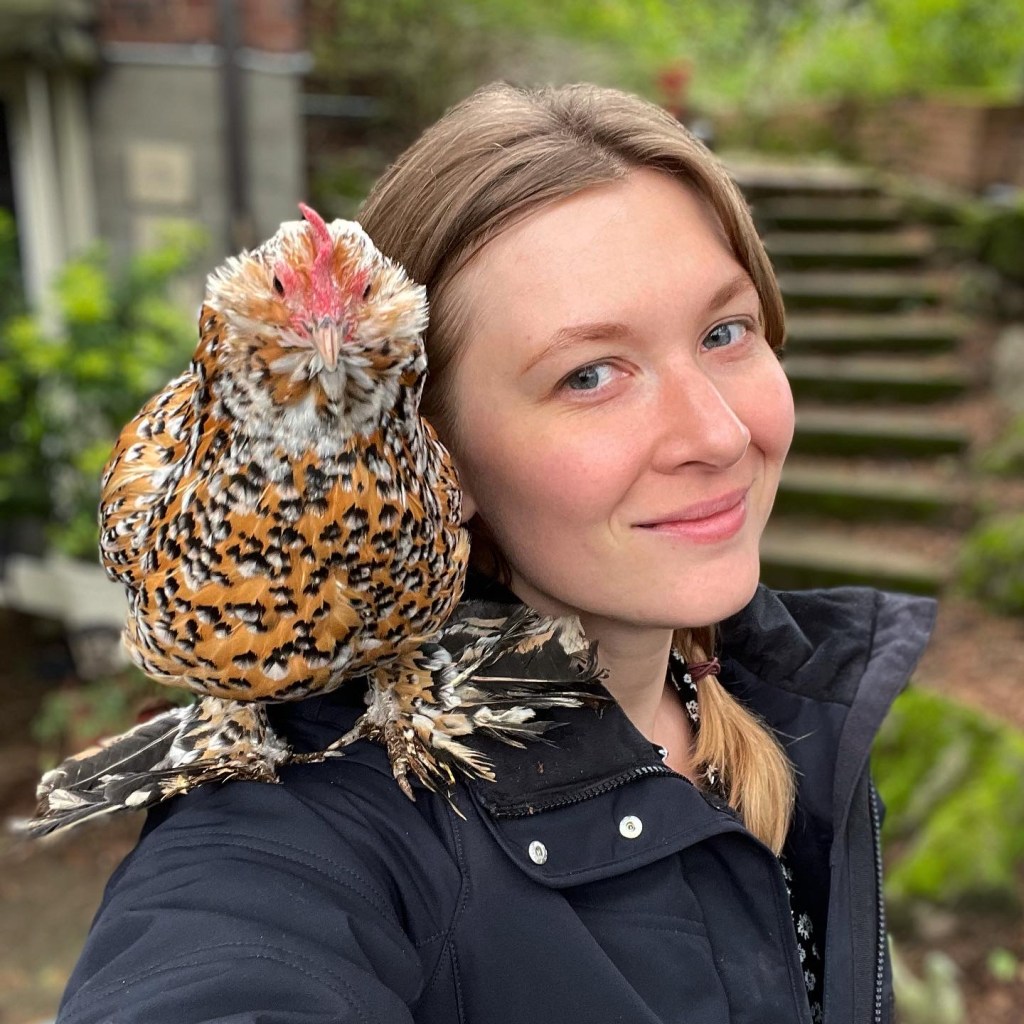
 Raising backyard chickens continues to grow in popularity. The number of households in the United States with a backyard flock jumped from 8% in 2018 to 13% in 2020, according to a survey by the American Pet Products Association.
Raising backyard chickens continues to grow in popularity. The number of households in the United States with a backyard flock jumped from 8% in 2018 to 13% in 2020, according to a survey by the American Pet Products Association.
But our fondness for chickens is hardly new. The relationship between humans and chickens goes back thousands of years, to when humans began domesticating the red junglefowl native to Southeast Asia.
Guest host Sophie Bushwick has a compre(hen)sive conversation with Tove Danovich, freelance journalist and author of the new book Under the Henfluence: Inside the World of Backyard Chickens and the People Who Love Them, about how she was charmed by her own backyard chickens, the history of their domestication, and the surprising science of chicken intelligence.
All photos are credited to author Tove Danovich.
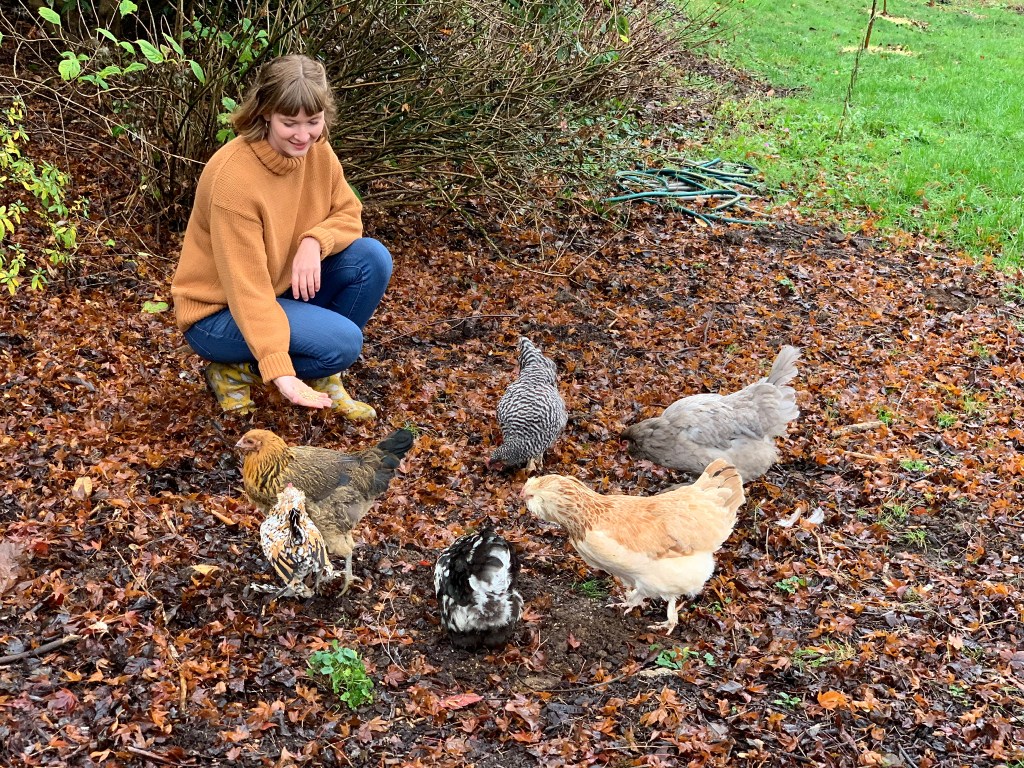
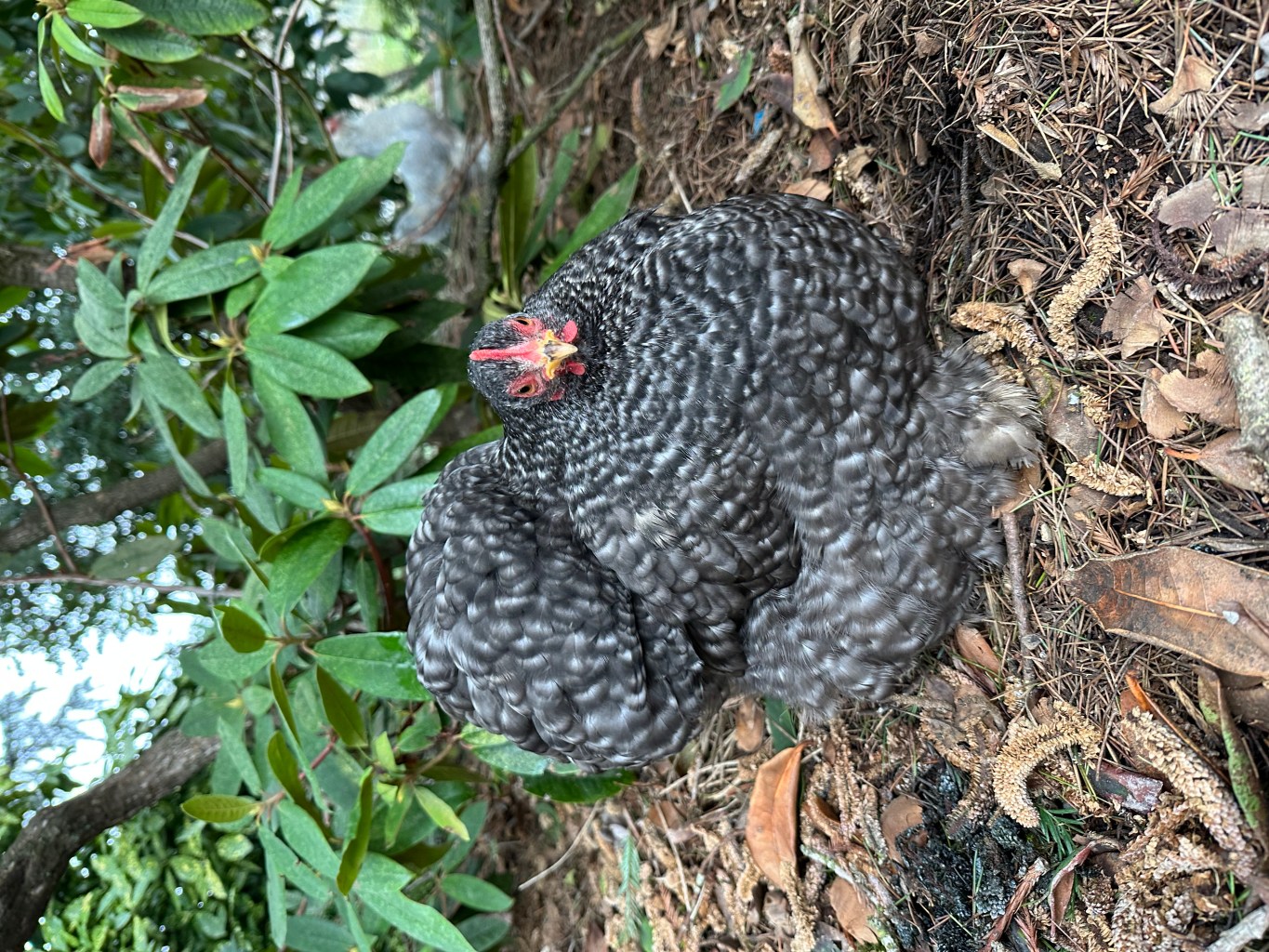
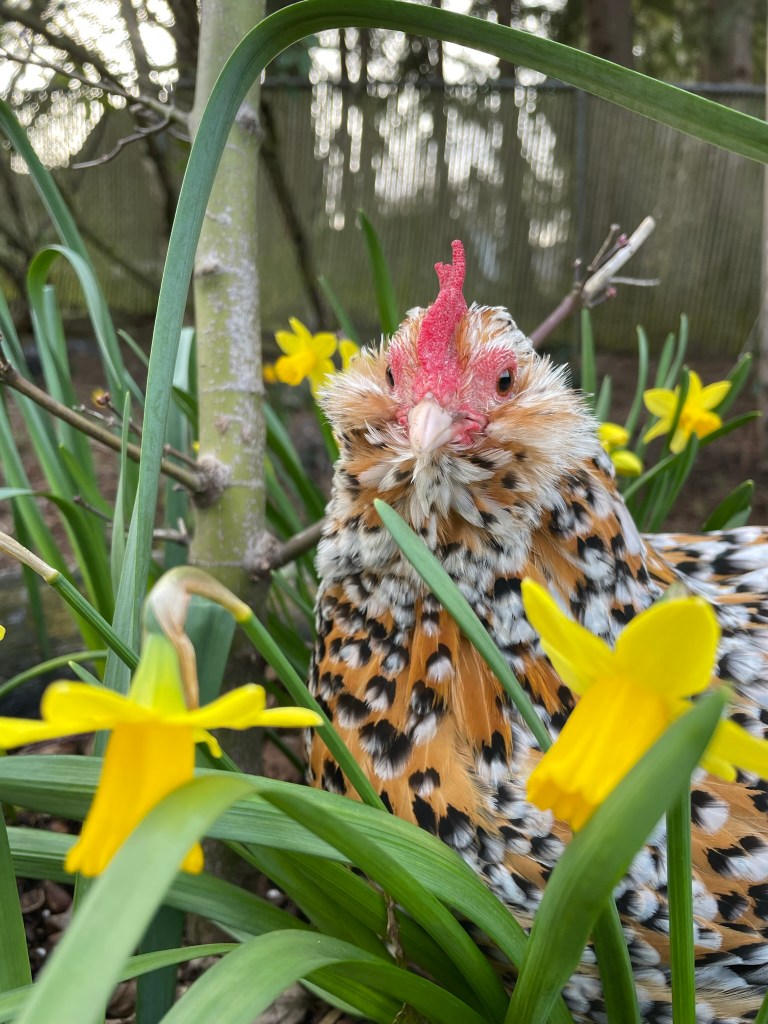
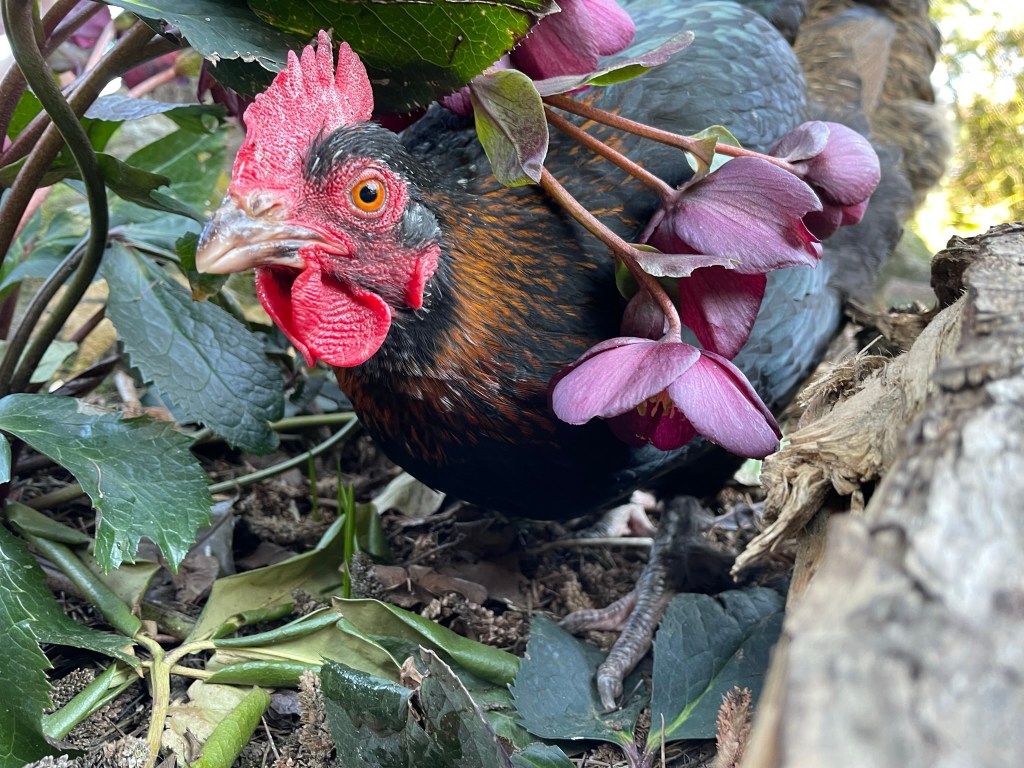
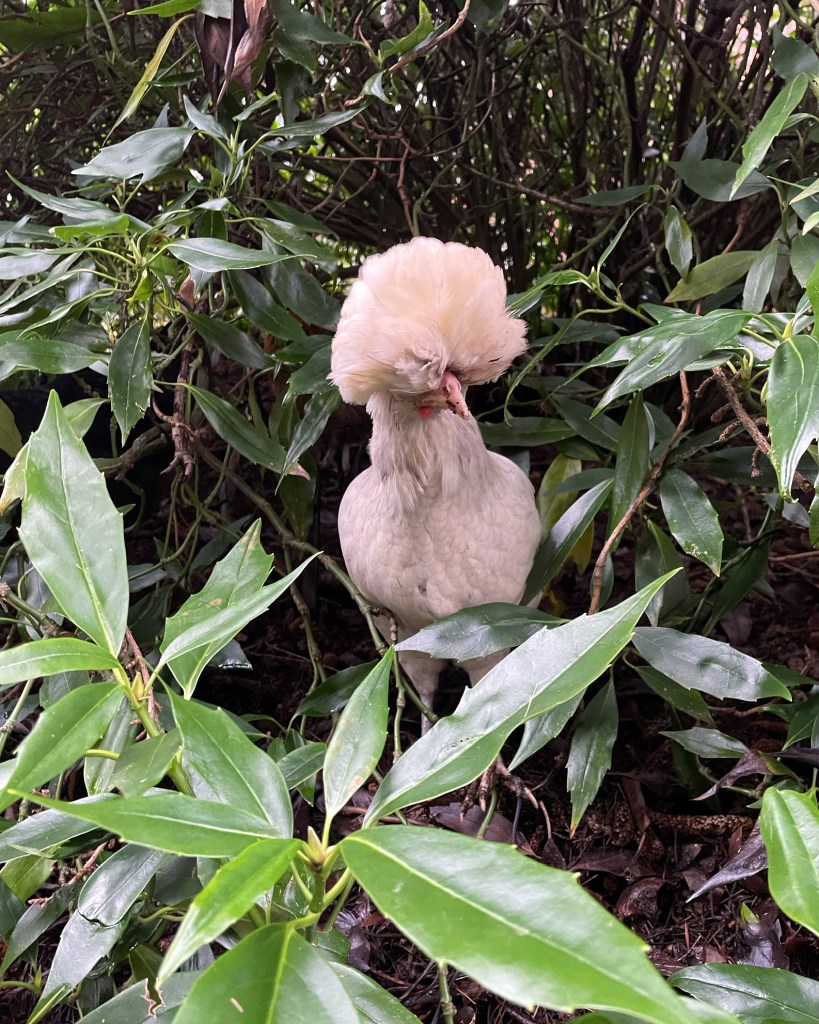
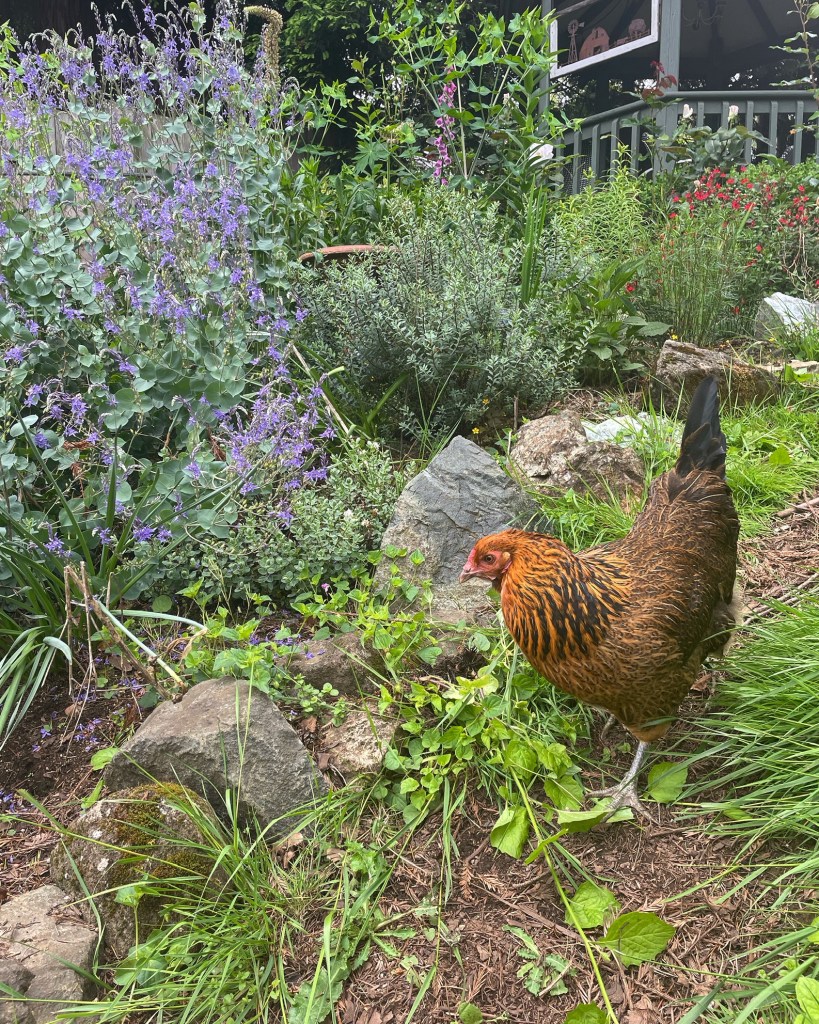
Tove Danovich is the author of Under the Henfluence:Inside the World of Backyard Chickens and the People Who Love Them. She’s based in Portland, Oregon.
SOPHIE BUSHWICK: This is Science Friday. I’m Sophie Bushwick. And I’m here with my cohost this week Kathleen Davis to talk about chickens.
KATHLEEN DAVIS: Sophie, I am so excited to hear more about this. I love eggs. An ideal day for me, I’m eating two eggs a day, fried, scrambled, doesn’t really matter how they are.
SOPHIE BUSHWICK: Kathleen, have you ever thought about getting some backyard chickens so you could get fresh eggs every day?
KATHLEEN DAVIS: I can’t say that I’ve genuinely considered that in my tiny New York apartment, but you have beak to my interest, Sophie.
SOPHIE BUSHWICK: Aah. Well, I keep hearing more and more about people in the city getting a backyard flock. The other day, I was walking around in Queens, and I saw a few chickens that were just wandering around, then I spotted the coop in someone’s yard. Looked to me like a coop attempt. Oops. Sorry, I mispronounced that. I meant a coup attempt.
KATHLEEN DAVIS: It seems like those chickens are really living their best lives in New York City.
SOPHIE BUSHWICK: Ooh, yeah. Well, it’s not just New York. All over the country, more people are getting interested in raising backyard chickens, but this is hardly new. The relationship between humans and chickens goes back thousands of years. Joining me now for a comprehensive conversation about the relationship between chickens and humans is my guest Tove Donavich, freelance journalist and author of the new book Under the Henfluence, Inside the World of Backyard Chickens and the People Who Love Them. She’s based in Portland, Oregon. Tove, Welcome to Science Friday.
TOVE DONAVICH: Hi Sophie. Thank you so much for having me.
SOPHIE BUSHWICK: To start off, how did you get interested in chickens?
TOVE DONAVICH: I think my story is very similar to how a lot of people wind up becoming interested and then later a little too interested in chickens, which is I got a small flock of three hens initially from my backyard, and the idea was that they will provide eggs and basically pay rent in exchange for all of my care and housing of them. But then it really quickly spiraled. They just were so fascinating. They arrived as day old chicks. And, of course, you’re spending a lot of time with them. They are adorable baby animals. What’s not to like?
So as I was spending time watching them and seeing them grow and develop, I had all these questions about chickens and why they were doing the things that they were doing, how far back our history went, and I just didn’t really find the answers anywhere. So I went searching.
SOPHIE BUSHWICK: You clearly have caved to the henfluence. So what is it about poultry that got you so hooked?
TOVE DONAVICH: I think they’re really fascinating. They’re so different from mammals, which I think can be hard for a lot of people. Our dogs have evolved this ability to raise their eyebrows to mimic human expressions. Cows move their mouths. Goats make those funny screaming sounds. But birds don’t have a lot to work with, especially not chickens who aren’t as dexterous as our parrots are.
So you have to spend a little more time getting to know them, but once you do, they are so fascinating and charming and personable. Each of my hens has very strong personalities. They have these wonderful, little sounds that they make. Because they’re flock animals, they’re constantly in communication with each other. And even just going around the yard, they keep up this really delightful, relaxing burble that’s just them saying like, I’m OK and checking in on each other. And they’re a delight to be around.
SOPHIE BUSHWICK: And some of that personality comes across on your Instagram. It’s called the Best Little Hen House, and it has quite a following. Apparently, the breakout star is Emmylou, and she’s pretty distinctive looking. So can you describe for our listeners what she looks like and some of her antics?
TOVE DONAVICH: Emmylou is just a delight. She’s a Millie Fleur d’Uccle bantam, which is bantams are a small breed of chicken. If I put her in the palm of my hand, her whole body is about the size of my hand. So she’s quite small.
SOPHIE BUSHWICK: That sounds adorable.
TOVE DONAVICH: And she has giant foot feathers that are about three inches in diameter. I did recently measure them because I was curious, and they’re so big I have to trim them back because they’re like snowshoes, and she’ll start tripping over them.
SOPHIE BUSHWICK: Wow.
TOVE DONAVICH: And she has this delightful little beard on her face, but she is constantly getting into low stakes mischief. One of the things I really love about chickens is it’s like a tiny soap opera in your backyard. And I think Emmylou is a great example of that, where she is constantly getting into fights with the other chickens. One day she’s friends with someone. The next day they’re enemies. I don’t know what happened in between. And another funny thing that she in particular likes to do is hide her eggs throughout the yard.
This is a behavior that is left over from the wild jungle fowl the chickens descended from, where when they are ready to have chicks, they go find a very secluded, hidden spot, and they lay a clutch of eggs until they’re ready to sit on and incubate them. So my chickens, despite being domesticated, a couple of them, and Emmylou in particular, will get this urge to go hide eggs in the yard, and I absolutely cannot find these egg clutches that they’ve hidden.
SOPHIE BUSHWICK: It’s like she’s the best Easter egg hunt designer ever.
TOVE DONAVICH: Yeah. It’s like an Easter egg hunt of my own. And because I have hens that lay eggs in different colors, I really do get the colorful Easter eggs when I go looking. So I’ll see her sneakily pop out of a bush and be like, I’m going to go look inside that bush and see what’s there. And there will be 12 eggs. It’s wild. So she always keeps me on my toes.
SOPHIE BUSHWICK: And you’re not the only one to fall in love with chickens. There’s been a surge in people in the US getting interested in getting their own backyard chickens. What’s driving this trend?
TOVE DONAVICH: It started, I think, in the early 2000s. People in rural areas have been continuously keeping chickens for a very long time, but I think when we started getting more interested in, the local food movement was really taking off then. We had these books like Fast Food Nation and the Omnivore’s Dilemma that really put in the forefront just how bad the industrial food system is, not just for the environment and the people that work there but for the animals themselves. And there really isn’t an animal that is treated worse on our farms than the chicken.
And so a lot of people realized that chickens are both fun to have, pretty easy to keep, and you can get eggs in the backyard from hens, had happy lives. And so more and more people started getting into that. And that has only grown in the two decades since then. Every time the economy goes down, we see a little boost in chicken keeping. So, of course, in recent years, with the pandemic in the early days of lockdown, toilet paper was hard to find but so were chickens because everyone went out to start a flock of chickens.
And now, we have avian flu, which has led to the deaths of 58 million chickens just in the United States over the last year or so. And that has led to an increase in the price of eggs and sometimes egg shortages. So, once again, people are rushing out to get chickens. On the whole, they are just on the up and up.
SOPHIE BUSHWICK: And let’s go back in time a little more. Why and how did humans begin domesticating chickens in the first place?
TOVE DONAVICH: So we domesticated them about 3,500 years ago, which in this scheme of domestication is more recent by a lot compared to horses and dogs. And what we think currently is that they were actually domesticated for entertainment, so through cockfighting and also for their role in religious rituals. That, of course, has changed a lot today. Once we were keeping these chickens, we realized, oh, these eggs are a really useful source of food that we can have very easily, and we started breeding chickens to produce more eggs.
Their jungle fowl ancestor only lays 10 to 15 eggs a year. And the modern production chicken that you might have on an industrial farm lays closer to 280 to 300 eggs a year. That is a huge increase. And a lot of that increase has only happened in the last 60 years as we’ve really industrialized farming practices.
SOPHIE BUSHWICK: Can you talk a little bit about chickens being raised for meat versus being raised to lay eggs?
TOVE DONAVICH: There is a difference, and one of the differences is just the lifespan of these birds. When you have– and I’m talking that the commercial poultry operations– a laying hen, she’s probably going to live about a year and a half to two years old around the time of her first molt. And at that time, they are considered spent hens and are no more. But because the poultry industry in about 1930 diverged, we really had chickens that began to specialize.
So our egg-laying chickens are only good for laying eggs. They lay these 300 eggs a year, but their bodies are so slim that they are not actually worth the money it would take to slaughter them to go into the meat system or even pet food. So instead, we have this separate line of chickens that most people refer to as broiler breeds that have been specially designed to put on meat as fast as possible.
In 1925, the average broiler went to market at about 112 days old and only weighed 2 and 1/2 pounds. Today, that takes like six weeks, and it’s 6 and 1/2 pounds. That is a big, big difference. Just genetically the modern broiler and the modern laying hen are very, very different from these dual purpose breeds that we would have had in the past.
SOPHIE BUSHWICK: And even though they sometimes get a bad rap as being unintelligent, chickens have these extremely sophisticated ways of communicating with each other. One example is something called tidbitting bidding. Can you tell me more about what that is?
TOVE DONAVICH: I love tidbitting. It’s probably one of my favorite chicken behaviors. It happens, usually roosters do it, when they want to romance a hen or get on their good side if they find an especially tasty morsel like a nice bug or really nice green of a leaf. They have a special call that they use and sometimes even a dance that goes with a little wing dip. And they call the hens over and say, look what I have for you. Come and have your special treat. And the hens will come running.
And what’s funny is that mating doesn’t usually take place right after this, but the hens file this information away for later. And there have been some funny studies that people have done that show that roosters sometimes will fake tidbit, which means they go through all the motions of tidbitting, but there’s not actually any food there. And the hens might fall for this once or twice, but they can tell the difference and do remember which boys are all talk and no action and which ones actually have the good treats.
SOPHIE BUSHWICK: That’s incredible. And you visited some pretty smart and well-trained chickens for the book. Can you give me some examples of what chickens are capable of?
TOVE DONAVICH: One of my first chapters I actually got to report for the book was I went to a chicken training camp in Washington State where they use clickers, like you would use for your dogs, and train chickens to do obstacle courses, which was amazing to watch. And it really teaches you so much about what a chicken is capable of. And I think more than that, working with these animals to teach them new things makes you appreciate them differently than you would have before.
And it’s not as though chickens just naturally love weaving through poles in and out or walking over bridges and through tunnels. These are things that you really have to work with the chickens to get them to learn, and they are thinking about it and trying to do the right thing in order to get treats. So they are incredibly food motivated, which means they’re very trainable, but they’re capable of a lot more than we give them credit for. And there are some wonderful Instagram accounts and people in social media that do tricks with their chickens jumping through hoops or jumping up onto their arms or even doing little dances between their legs.
SOPHIE BUSHWICK: This is Science Friday from WNYC Studios. I’m Sophie Bushwick. If you’re just joining us, I’m talking with author Tove Donavich about the history and science of domesticated chickens. And some chickens aren’t just smart. They’re also, well, pretty. Can you tell us a little bit about what you learned about show chickens in researching the book?
TOVE DONAVICH: When I first got into chickens, I thought of chickens as the classic farm ones, where it’s white, it’s black and white striped. You have the little red hen. And as I started getting into my flock, I learned that the world of chickens is so varied, and there are over 400 variations of recognized poultry breeds. This isn’t even, someone put two chickens together, and a special mutt came out of it, that these are breeds recognized by the American Poultry Association, which is similar to our American Kennel Club or another group that looks at breeds of animals and tracks them.
So chicken shows were actually the first animal shows that we ever had anywhere. Back in the Victorian era, people started getting really into fancy poultry and wanted a way to show them and say, my chicken is better than your chicken. So they developed these breeds and breed standards to go with it and developed these immensely popular poultry shows. So when you go to something like the Westminster Dog Show today, you have chicken shows to thank for that.
SOPHIE BUSHWICK: Many people, when they start raising chickens, like you did, they originally get the hens for the eggs, but then they go on to develop a close bond with them. Do you think there’s a line between a pet and a farm animal, and should there be?
TOVE DONAVICH: That is such a good question, and it’s something I think about a lot. Chickens are very interesting because they have really only recently become thought of as a pet. When people started these small backyard flocks, like you name your chickens, that feels very natural. And I think just the act of naming something, of having a relationship with three to six hens versus maybe a couple of hundred, which you would on a small farm, these large farms that are industrial, they have 100,000 chickens. So you are not going to be naming them.
So having a small flock in close proximity really does allow you to get to know these birds. And yet, under the law, they are still primarily treated as livestock. There are some different rules for just how to behave in a suburban environment with your chickens. You’re expected to keep them in conditions that are much better than what you would find on an industrial farm, but by and large, there really aren’t a lot of protections for chickens. And a number of people think that there should be.
One interesting way we see this play out is with the response to avian flu. It’s something that I’m very worried about as a backyard chicken keeper because, if any of my chickens get it, the entire flock has to be euthanized. That is the way that we have dealt with the spread of avian flu in an industrial setting because it’s the easiest method.
And you don’t risk the spread of disease. And while there has been a vaccine available, we don’t want to use it because it would hinder our ability to export some of these chicken products that we would really like to sell to other countries. And so that is a really great example of how chickens being both livestock and pet can really lead to a lot of issues for people.
SOPHIE BUSHWICK: Thank you, Tove. I have learned so clucking much about chickens.
TOVE DONAVICH: Thank you so much for an excellent talk.
[LAUGHS]
SOPHIE BUSHWICK: Tove Donavich is a freelance journalist and author of the book Under the Henfluence, Inside the World of Backyard Chickens and the People Who Love Them. She’s based in Portland, Oregon. If you want to read an excerpt of the book or see some pictures of Tove’s adorable hens, go to sciencefriday.com/hens. That’s sciencefriday.com/hens.
Copyright © 2023 Science Friday Initiative. All rights reserved. Science Friday transcripts are produced on a tight deadline by 3Play Media. Fidelity to the original aired/published audio or video file might vary, and text might be updated or amended in the future. For the authoritative record of Science Friday’s programming, please visit the original aired/published recording. For terms of use and more information, visit our policies pages at http://www.sciencefriday.com/about/policies/.
Shoshannah Buxbaum is a producer for Science Friday. She’s particularly drawn to stories about health, psychology, and the environment. She’s a proud New Jersey native and will happily share her opinions on why the state is deserving of a little more love.
Sophie Bushwick is senior news editor at New Scientist in New York, New York. Previously, she was a senior editor at Popular Science and technology editor at Scientific American.